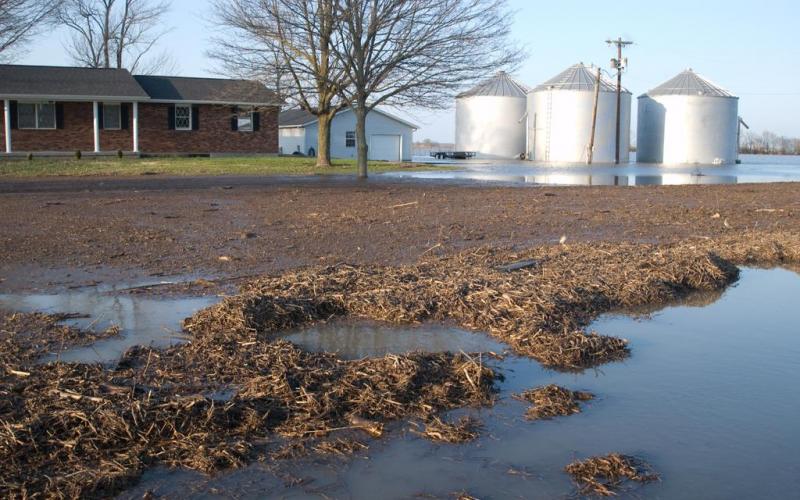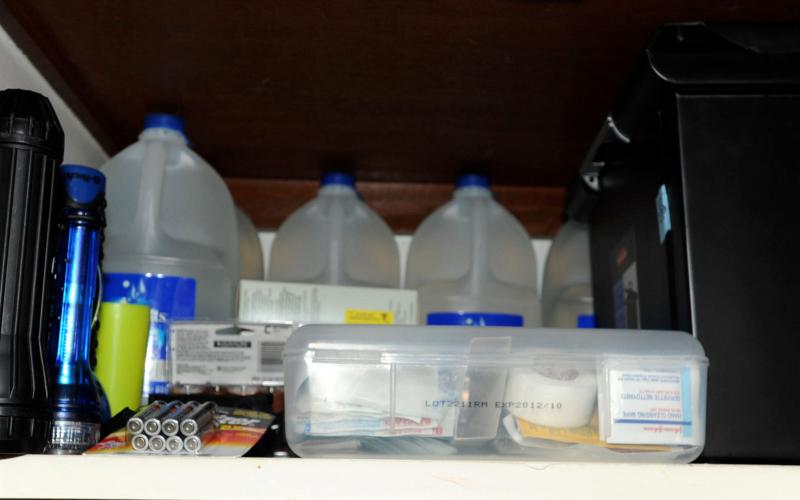Written by Kayla Paszek under the direction and review of Megan Erickson, former SDSU Extension Nutrition Field Specialist.
Consuming water in some way, shape, or form is essential for survival. Staying adequately hydrated gives your body the balance it needs to continue throughout the day. During a flood or other natural disasters, the circumstances can become more difficult to find safe water to drink.
Danger Identification
Look for signs of danger in order to identify unsafe drinking water. If you come across any water that could be questionable, assume that it is unsafe. Also, if there is flood water over your well, there is a potential risk that the water could be contaminated. Listed below are some indicators that your water may be unsafe to drink.
- Difference in color
- Difference in smell
- Floating particles
*Note: Water may still be unsafe even if none of the above indicators are present. Also, follow up with your local authorities and they can assist if your tap water is safe to drink or use for cooking and bathing.
Effects of Drinking Contaminated Water
In the event that contaminated water is consumed, variable health concerns can result. Illness can develop from bacteria, parasites, viruses, or physical substances floating around in contaminated water. Some common symptoms that can develop are fever, nausea, vomiting, abdominal cramping, diarrhea, dehydration, and drowsiness. Considerations should be made when taken not only consuming water directly, but by also brushing your teeth, showering, cooking, washing dishes, washing your hands, rinsing fruits and vegetables, making ice cubes, and the water your pets drink.
Solutions
- Boil your water for 1 minute. Boiling water is the preferred method to use because it ultimately kills the harmful living microorganisms in the water. Store it clean containers with covers.
- Drink bottled water. Bottled water is an appropriate way to use safe water only if the source of the bottled water has not been contaminated itself.
- If you can't boil water, you can disinfect it using household bleach. Bleach will kill some, but not all, types of disease-causing organisms that may be in the water. If water is cloudy, filter it through clean cloths or allow it to settle, and draw off clear water for disinfection. Add ⅛ teaspoon (8 drops) of regular, unscented, liquid household bleach for each gallon of water, stir it well and let it stand undisturbed for 30 minutes before you use it. Store disinfected water in clean containers with covers.
- SDSU Extension has resources and more information on what to do if a domestic well was flooded.
Storage
Storing safe drinking water is another area of concern. Ensure that the water is stored in plastic or glass containers. Do not use milk containers to store water as the seal has already been broken and will not close properly. Also, be certain the containers used are disinfected to avoid any risk of contamination.
Resources:
- Academy of Nutrition and Dietetics. Food Safety in the Home after a Hurricane and Flooding.
- South Dakota Department of Health. Food Response – Water for Drinking and Cooking.
- United States Department of Labor. Occupational Safety & Health Administration: Flood Cleanup.

